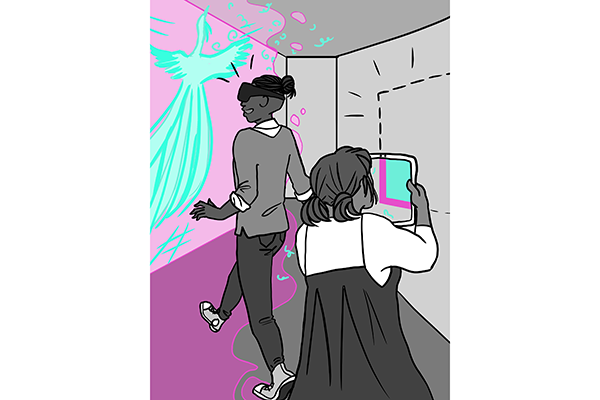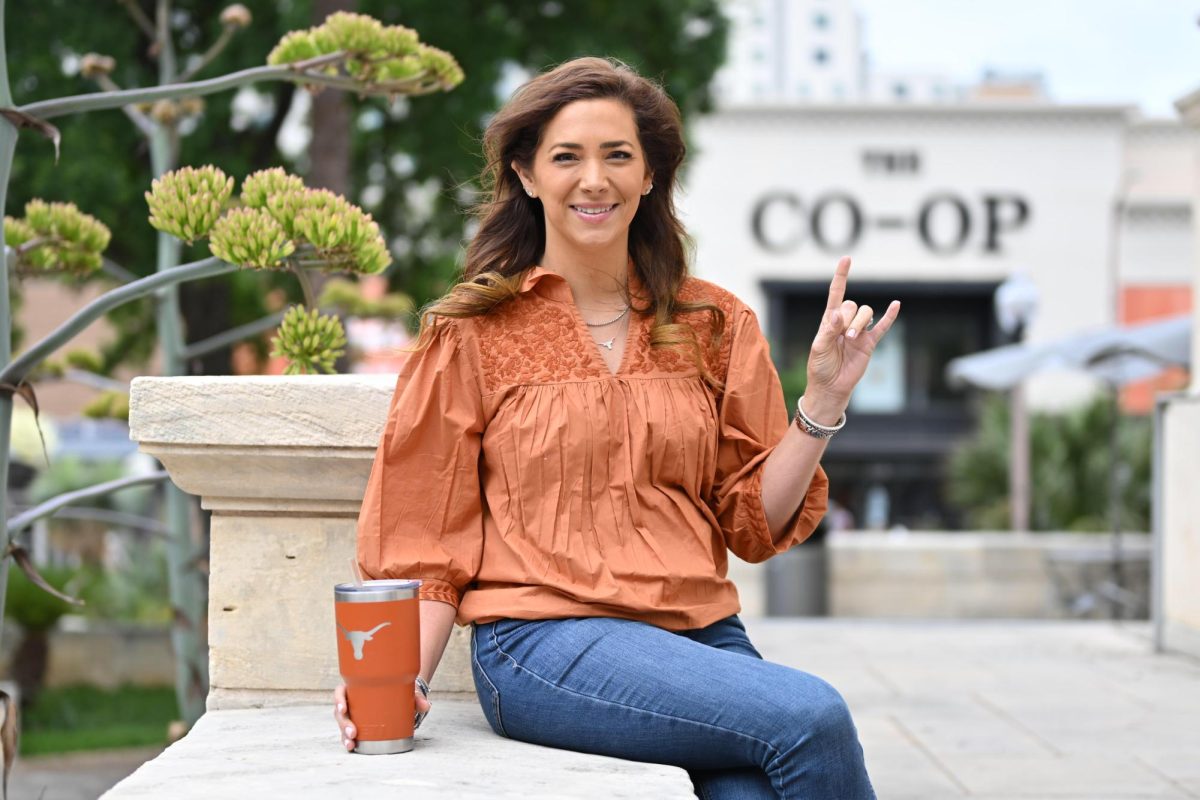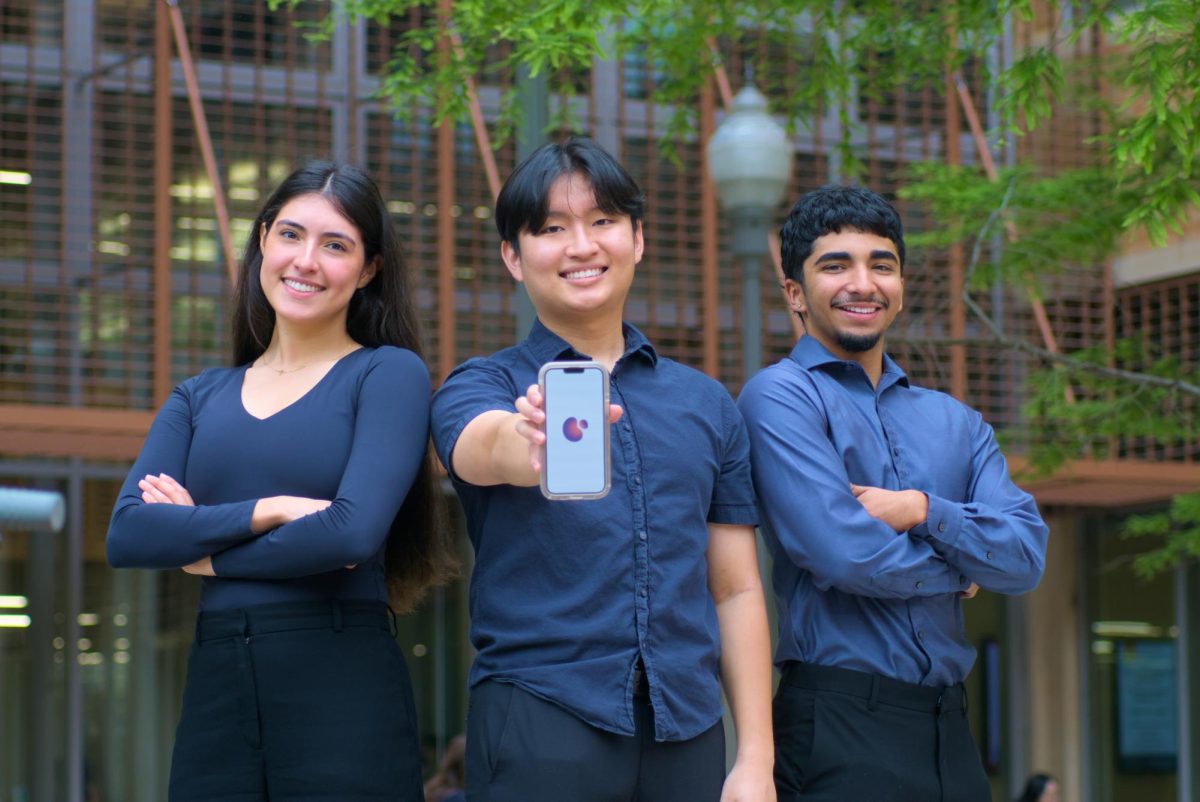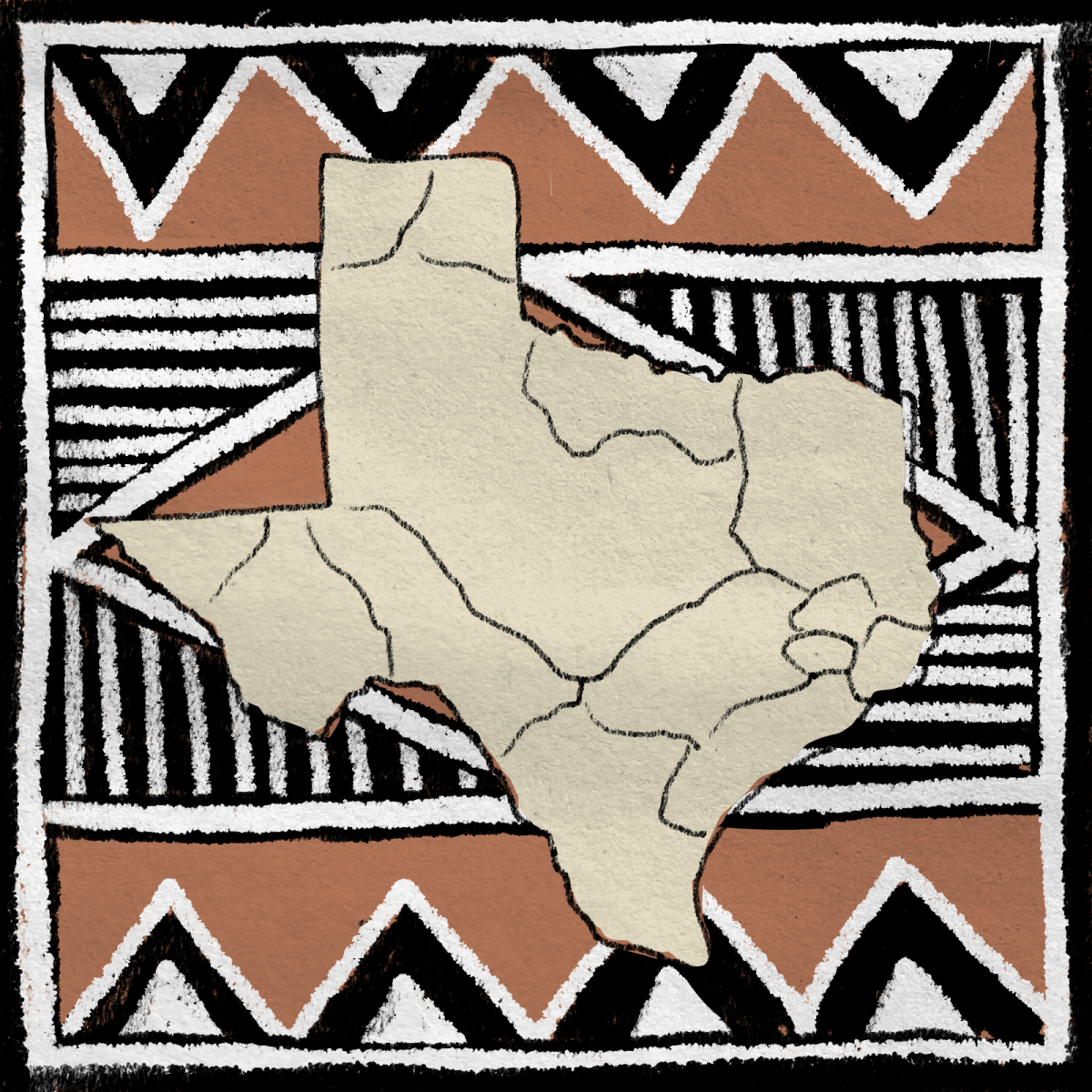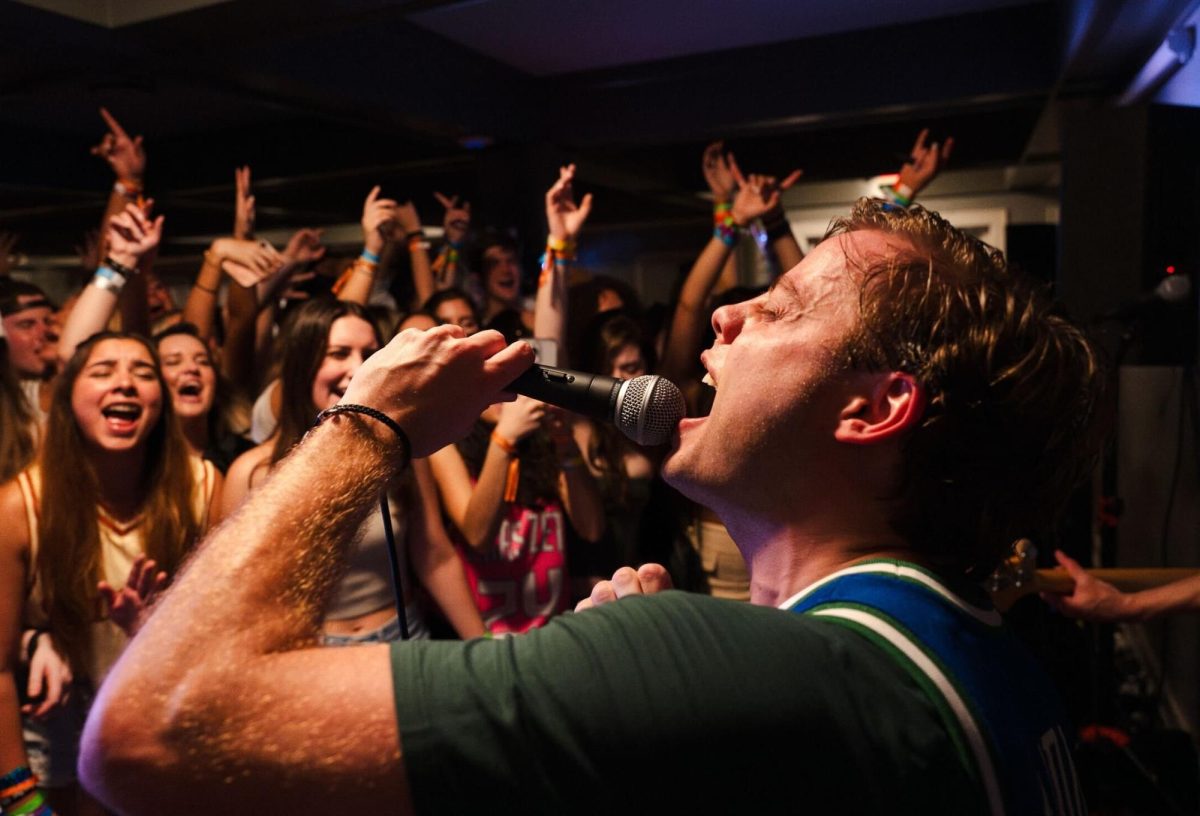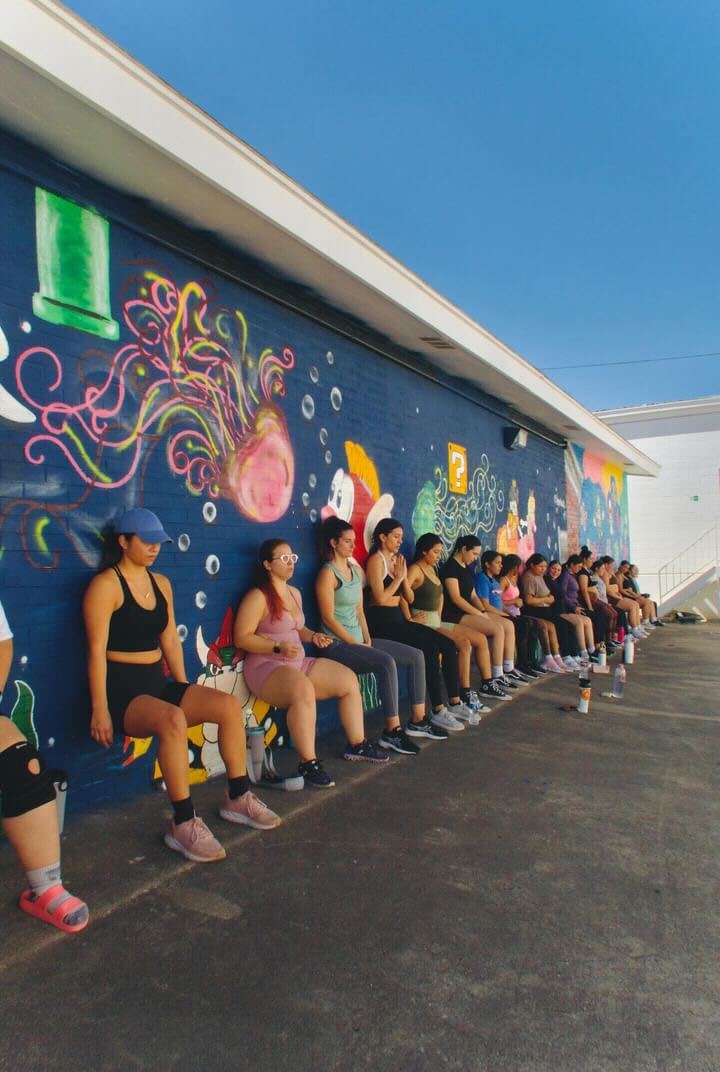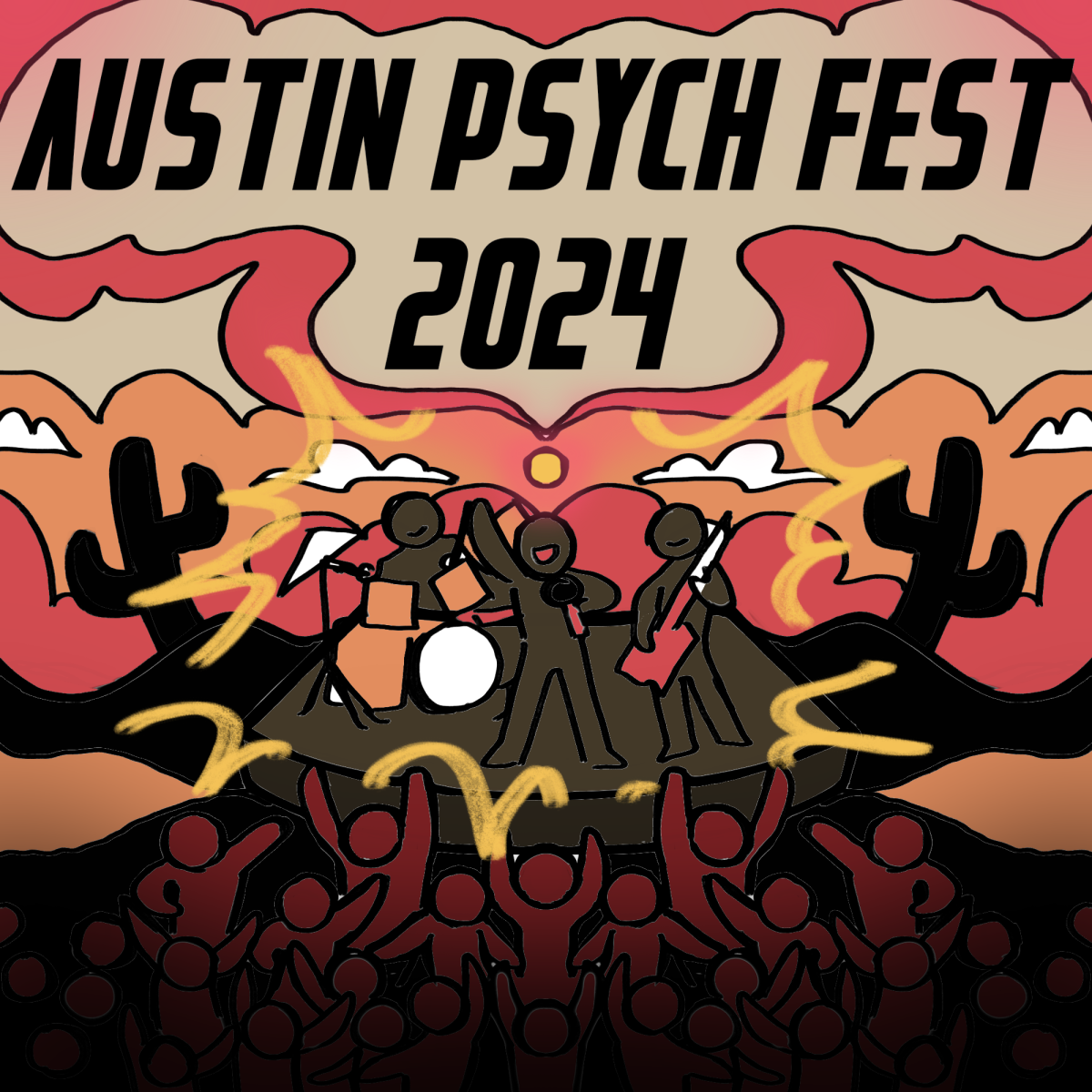Despite its playful name, the FLARMINGOS app makes a serious point.
Once downloaded, users can tap anywhere on the screen to populate their surroundings with life-size augmented reality flamingos. The birds, pink, quirky and cartoonish, perform courtship displays in living rooms, on sidewalks or wherever the user may be.
This fusion of art and augmented reality is a relatively new and exciting field for many artists. Pushing the boundaries of how to create, artists are using technologies as innovative tools for artistic expression. As with any emerging medium, artists say they grapple with the challenges of an ever-changing technology and pushback from critics.
Developed by Kristin Lucas, assistant professor of studio art, FLARMINGOS blends art and augmented reality to make a statement about habitat loss.
“It accentuates something about the vulnerability of the flamingo but also about the possibility of a new future,” Lucas said. “Through augmented reality, they’re ephemeral. They’re not really there, yet they’re there because that’s what the magic of AR does.”
Lucas, who will be teaching a transmedia class next spring, views augmented reality as just another tool. She said as artists, it’s about using what is available to explore creative limits.
MFA art candidate Rafael Gutierrez Jr. said he likes how using augmented reality feels subversive — he is able to make work that doesn’t necessarily have to be shown in a museum setting. He said what’s important when considering the technology is that the work still needs to make the viewer think.
“The problem I sometimes have with augmented work is that it looks cool, but is it saying something?” Gutierrez said. “I think that’s a challenge — still having something to say with your work, not just making something that looks cool because you can.”
Lucas said early augmented reality artists used the technology as a form of activism. In 2011, New York-based artist Mark Skwarek developed an app that allowed users to view an alternative reality at the border between North and South Korea, replacing checkpoints, barriers, walls and weapons at the Demilitarized Zone with 3D foliage. Lucas said it was a way, through art and tech, for Korean people to experience the charged space as if the conflict was over.
For Gutierrez, another draw of artificial reality is that it’s not as established a medium like painting or sculpting — forms that already have a body of historical work.
p>“With this technology, since it’s so new, you’re forming your own way to use it,” Gutierrez said. “For me, it’s exciting to be (working in) the unknown.”
Deepak Chetty, radio-television-film assistant professor of practice, who incorporates emerging technologies in his work, said there are a lot of critics who are a bit down on emergent media. They’re critical of using technology in an environment that was once entirely human-oriented, he said.
“Once they realize it’s just like any other artist’s tool, (and) another way to create, they’ll come around,” Chetty said.
For Lucas, the tool is tricky to navigate because the technology changes so rapidly. She said she has attended exhibitions where Apple would release a new update and then suddenly, if viewers updated, they could no longer view the AR.
“Today, there’s been so many advances in technology that it’s really a challenging medium to teach with because it’s changing so fast,” Lucas said. “You really don’t know if your tools are still going to be around next semester.”



